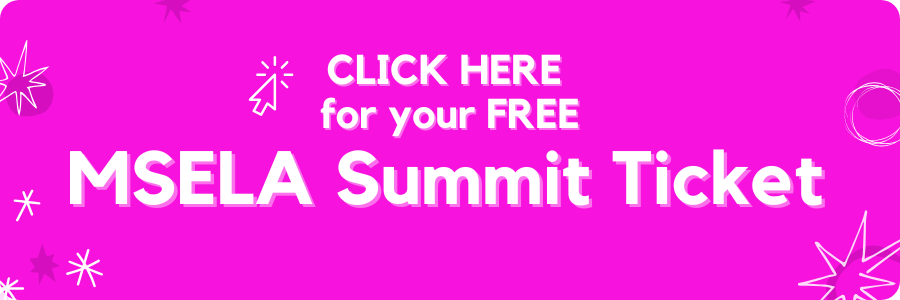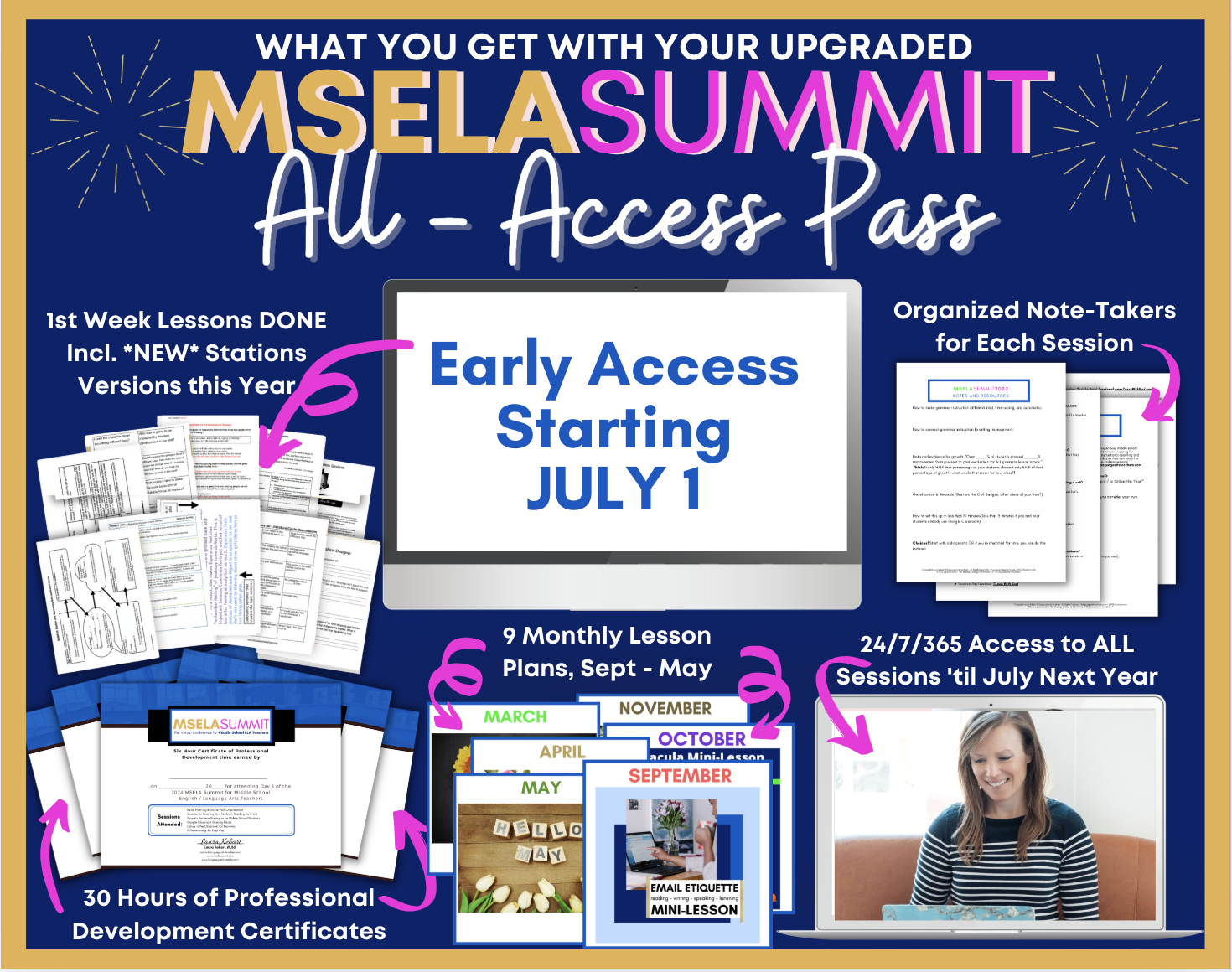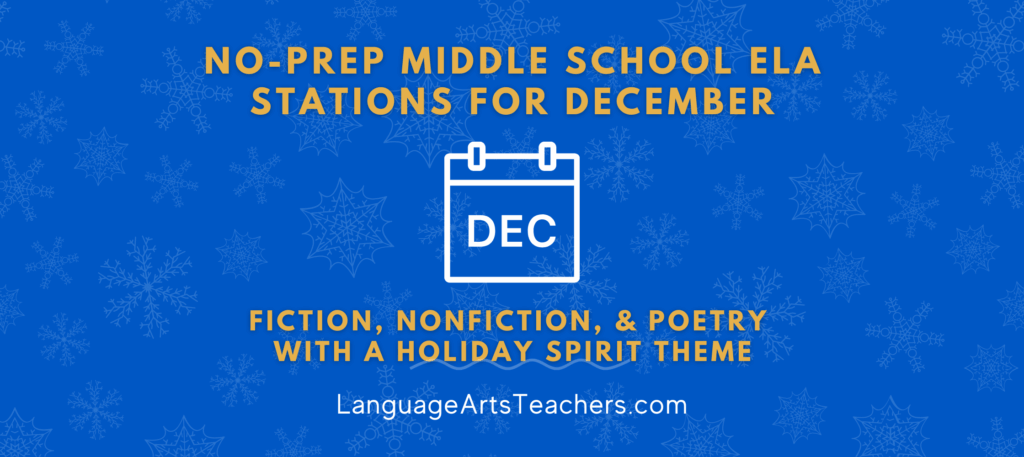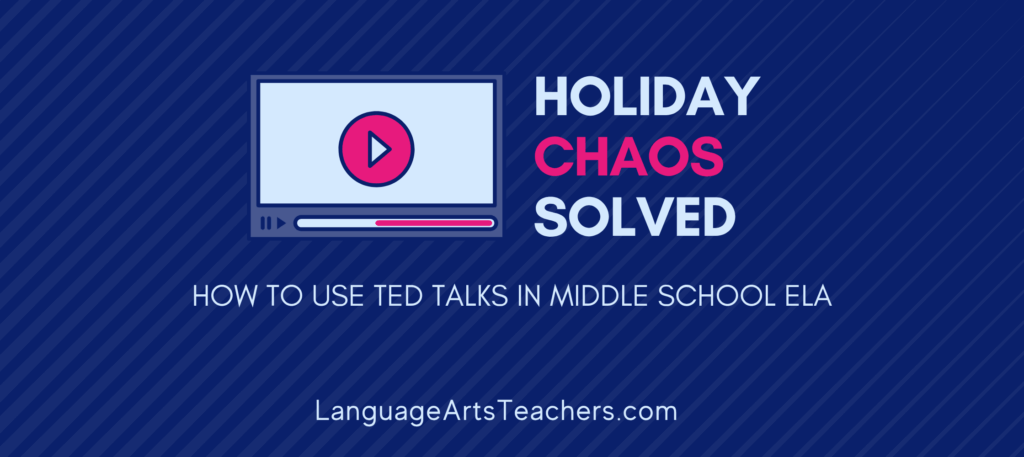Every once in a while, someone low-key mentions something that hits you like a perfectly-timed coffee run—it’s that simple lightbulb moment that makes your teacher-life 1000% easier.
I’ve gathered these lightbulb moments a little at a time over 20+ years of teaching, and what I’m sharing here are those golden nuggets—the ones that guide my teaching days while all others have disappeared.
Some came from mentors or colleagues, while others came from my own sheer survival instinct. So one at a time, here’s the real talk I wish I’d had all nice and organized to refer to earlier in my teaching journey↴
1. You don’t need a new font or cute borders to “update” your lesson activities. Use the one you already have as-is.
You know that narrative writing unit you love to teach at the beginning of each new school year? Yeah, that one. Stop tweaking the font and just teach it. I used to spend too much time making a “more customized” version of a lesson that was already great. And now? I’m known for my simple, plain lessons and activities that don’t have a lot of distracting decor or cutes-y but pointless borders. Spoiler alert: my students didn’t care about my updated headers—they cared that the example mentor text finally made sense and the directions were clear. Use what you’ve got. Your sanity will thank you.
2. Stop reformatting that slide deck. Your kids care more about understanding what to do and feeling confident than slide aesthetics.
In the past, I lost too many weekend afternoons re-designing slides with cute gifs and different color schemes. Want to guess what my students remembered? Not the dancing taco gif I spent 20 minutes searching for—just the fact that hyperbole means exaggeration. If the slides are readable and the examples are solid, you’re good. Let the theme be “I didn’t work at ALL this weekend.” Once I got THAT through my head, I slowly began creating my entire year’s-worth of Figurative Language Friday lessons using gorgeous background images with descriptive, thought-provoking quotes and open-ended discussion-worthy questions. The final version is here, and it stands the test of time because it’s classic, accessible, and doesn’t rely on dancing Gifs or pop-culture references that won’t make sense a year from now.
3. You don’t need a new novel unit. You just need one thing that works every time, for every novel.
I used to spiral into “novel unit overhaul mode” every time I started planning to teach our favorite novel each year… And it was even worse when I started planning for a NEW novel that I hadn’t taught before. The big win here? I figured out that the types of novel analysis tasks I needed to work through with my students was actually the same for every novel. I didn’t need novel-specific chapter questions and endless activities for each and every novel! I simply began curating the deepest, most-needed standards-based questions that came up repeatedly regardless of the actual novel… And that now lives here as my Novel Study Task Pack for ANY novel. No more individual, time-consuming, stressful novel unit bundles that you can only use once for a specific novel. This ONE Novel Study Task Pack is versatile with built-in student choice, and it’s designed to be used with every novel throughout the year.
4. A ‘meh’ grammar warm-up is still better than none. Post it and move on.
It’s happened more than once, where I forgot to prep the daily grammar warm-up. But you know what I discovered that ALSO works? Posting a random comma splice sentence on the board and telling my students to think of three ways to fix it. The first time I did this, I expected chaos and confusion… But I was also kind of curious about what they might come up with. Rather than stressing over the “one right way” to correct the grammar error, hey went all in with the creative aspect of how there’s more than one way to solve a grammar error. They debated semicolons vs. conjunctions like they were arguing over which Taylor Swift era is superior. It was actually fun! Moral of the story: done is better than dazzling. Grammar doesn’t need glitter.
5. The worksheet you want to use isn’t too ‘basic.’ It’s accessible and distraction-free. That’s a win.
I used to feel a bit self-conscious handing out a simple point-of-view worksheet during our short story unit. It was black and white. No bells. No whistles. No cutes-y borders. But you know what? My struggling readers get it. Most students don’t do well with plumped-up busy-patterned worksheets that look super cute on Pinterest, but that don’t serve their 5-second attention spans. Never underestimate the power of plain, simple, and clear. When did we start thinking that worksheets are bad, or that they have to be dressed up to engage our students? I use worksheets sparingly, and sometimes, a classic worksheet is exactly what’s needed—a way to convey a concept and to give a bit of practice to help solidify understanding.
6. You don’t need 12 anchor charts. You need one your students actually reference.
I used to cover my walls with anchor charts like I was prepping for a Pinterest photo shoot. But one year, I made one chart on text features—and we used it all year long, year after year. Kids pointed to it during discussions. They walked up to it for a closer look when they needed examples or reminders. Turns out, quality over quantity wins every time.
For separate nonfiction units for each grade level—6, 7, & 8— click here → The entire 6th grade unit is all about text features + text structures, and I love using it with struggling 7th or 8th graders to build a solid foundation before diving into their nonfiction grade level content.
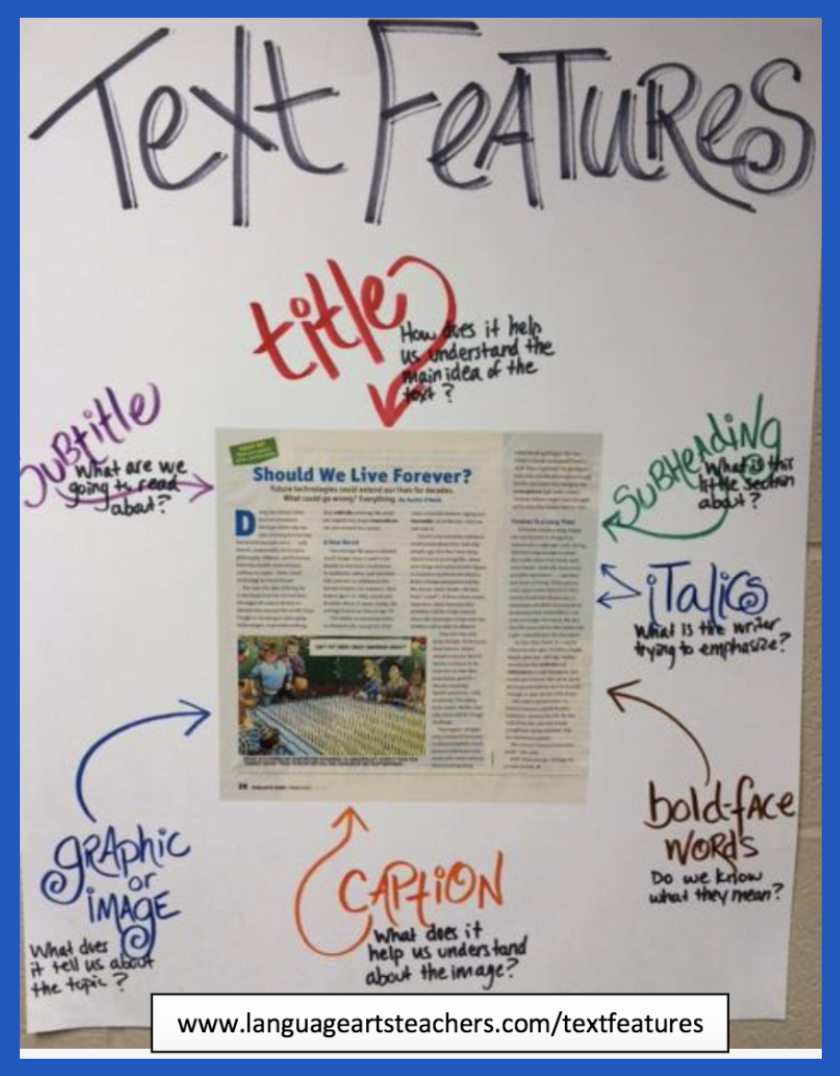
7. If today felt chaotic, you still taught. Celebrate that.
I remember one Thursday when it seemed like every single class throughout the day had some crazy issue. The WiFi went out in 2nd block, three students were crying (for very different reasons) in my 3rd block, and the fire drill interrupted my best mini-lesson of the week (4th block). I was ready to declare the day a total loss. But when I looked at my students’ quick-writes the next morning? Ok, they actually learned about internal vs. external conflict. Chaos doesn’t cancel progress.
8. That lesson that felt like a flop? It probably wasn’t. Kids are just mystery burritos of emotion.
Ever teach a lesson you were sure bombed? That was me after a tone and mood activity using song lyrics. My 4th block stared blankly at me the whole time. The next week, though, a student referenced the lyrics when analyzing “The Monsters Are Due on Maple Street.” Turns out, they were listening—they just had middle school faces on.
9. Don’t rewrite your whole plan. Edit one thing and hit print.
One time, I opened the prior year’s poetry unit and told myself I’d “just update a few things.” Four hours later, I had a new color scheme and zero actual progress. Now, I simply scan for typos (there’s ALWAYS a typo, no matter how many times I proofread), update a poem or a question, and call it done. Good enough is still good.
10. The fancy vocab game can wait. Your students need time to read.
I love a creative vocab game as much as the next nerdy teacher. But when I ditched the vocab “escape room” I was trying (and failing) to create and just gave my students silent reading time with sticky notes to track unfamiliar words? Boom! Vocabulary growth and a peaceful classroom. Sometimes less is more.
11. You don’t need more flair pens. You need a Friday where you leave on time.
Listen, I love a fresh pack of Flair pens. But those pens won’t grade your stack of essays or plan next week’s mini-lessons. Every Friday, I give myself a hard out at 3:45. I leave the ungraded quizzes.The work will always be there, and there will never be enough time. The next Monday, I was actually excited to teach again. And you know what I did with those quizzes? I ran stations the following week where I pulled students to my “teacher table” and we checked / graded the quizzes together as a review + practice task. I entered the grades right there on my laptop in real time while they got real time feedback. That was a huge win for them, and a major time-saver for me.
12. That station that didn’t work? Congrats! You’re now a better teacher for next time.
I once created a “theme identification” station that had three tasks and zero scaffolding (I was learning, experimenting, overthinking, and trying). My students looked at me like I’d handed them a calculus worksheet. It flopped. But the next time? I added sentence stems and a model. Magic. Failure is just the first draft of success.That was years ago, and I’ve since nailed down and dialed in the way I set up and run my stations… This is what I teach & train teachers to do, too, now!
You don’t need to overhaul your entire curriculum, color-code every binder, or stay at school until the moon rises. You need a few go-to lessons, a decent snack drawer, and the reminder that you’re already doing enough. More than enough.
So from one middle school ELA teacher to another? Take what you’ve got. Use it. Trust it. And go home on time. 😉
…………………………………….
You know what’s happening at the MSELA Summit, the back-to-school virtual conference for Middle School ELA Teachers?
→ Along with everything else you want to know about back-to-school reading + writing strategies, classroom management + engagement, and scaffolding for our struggling students, we’re also including a handful of sessions specifically designed to help Middle School Reading & Writing Teachers leverage AI for student use AND for our own use as well.
Get your free ticket to the MSELA Summit which is the annual back-to-school virtual conference specifically designed for Middle School ELA Teachers.
Click Here for the Dates + Details!

